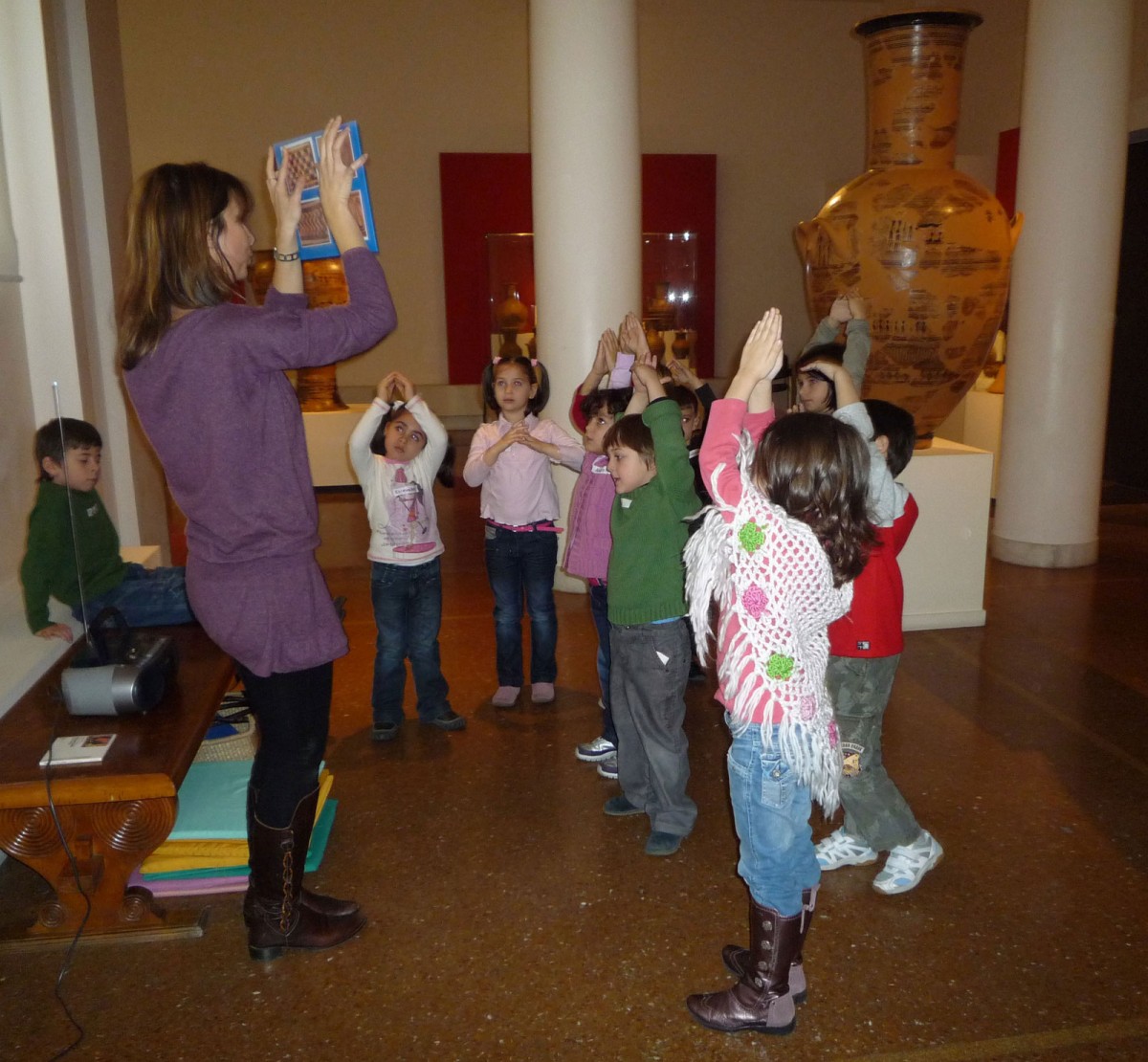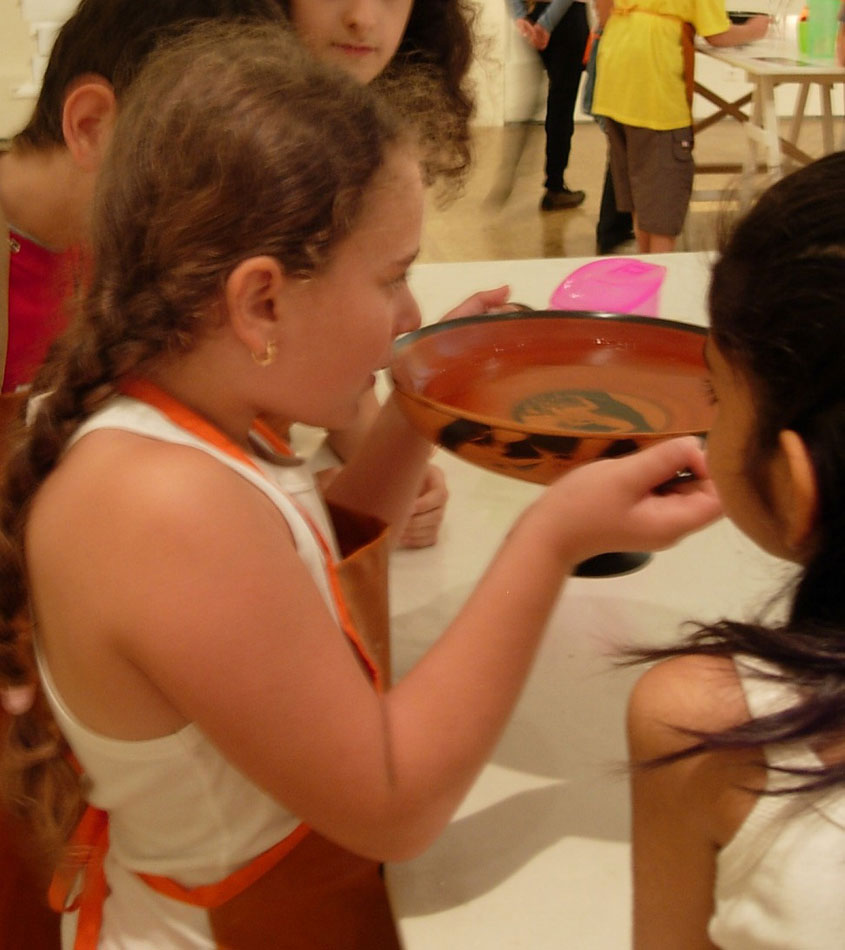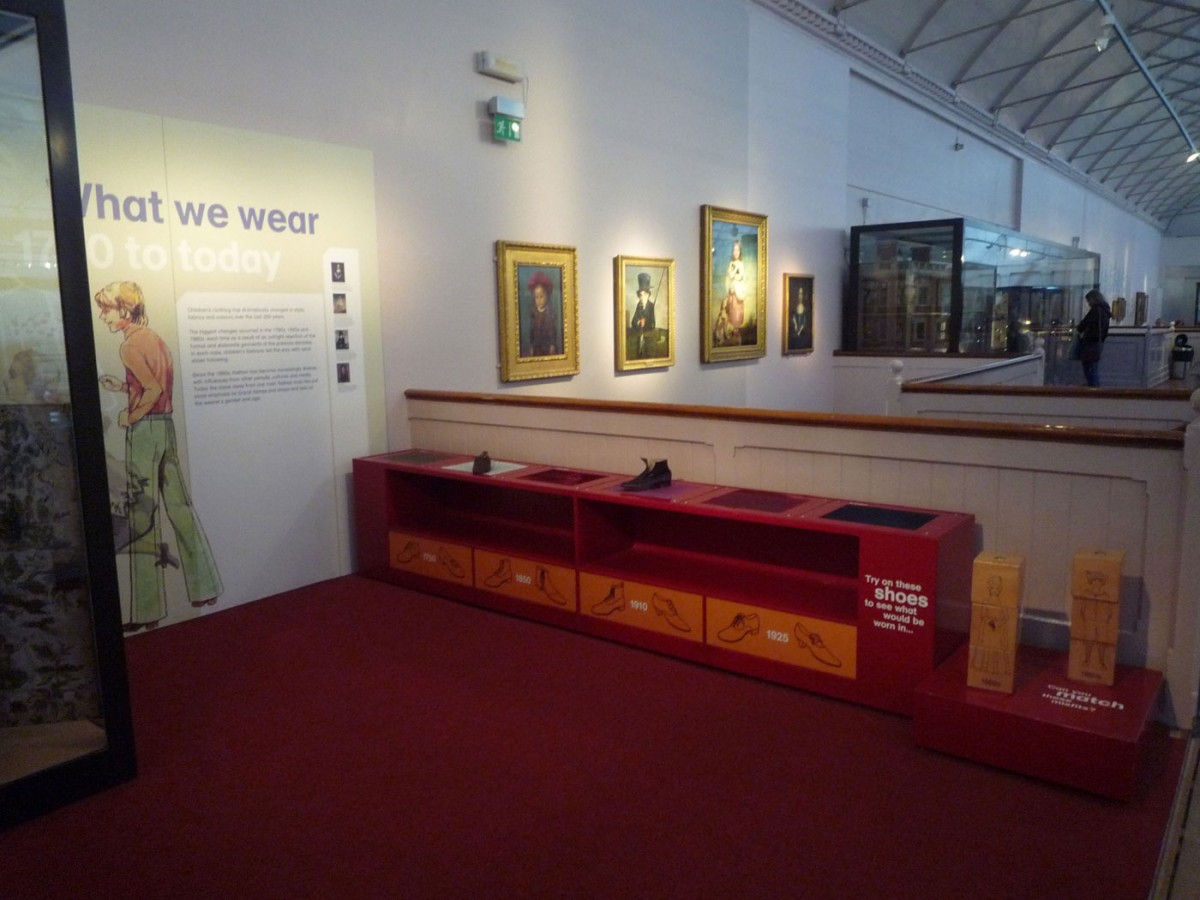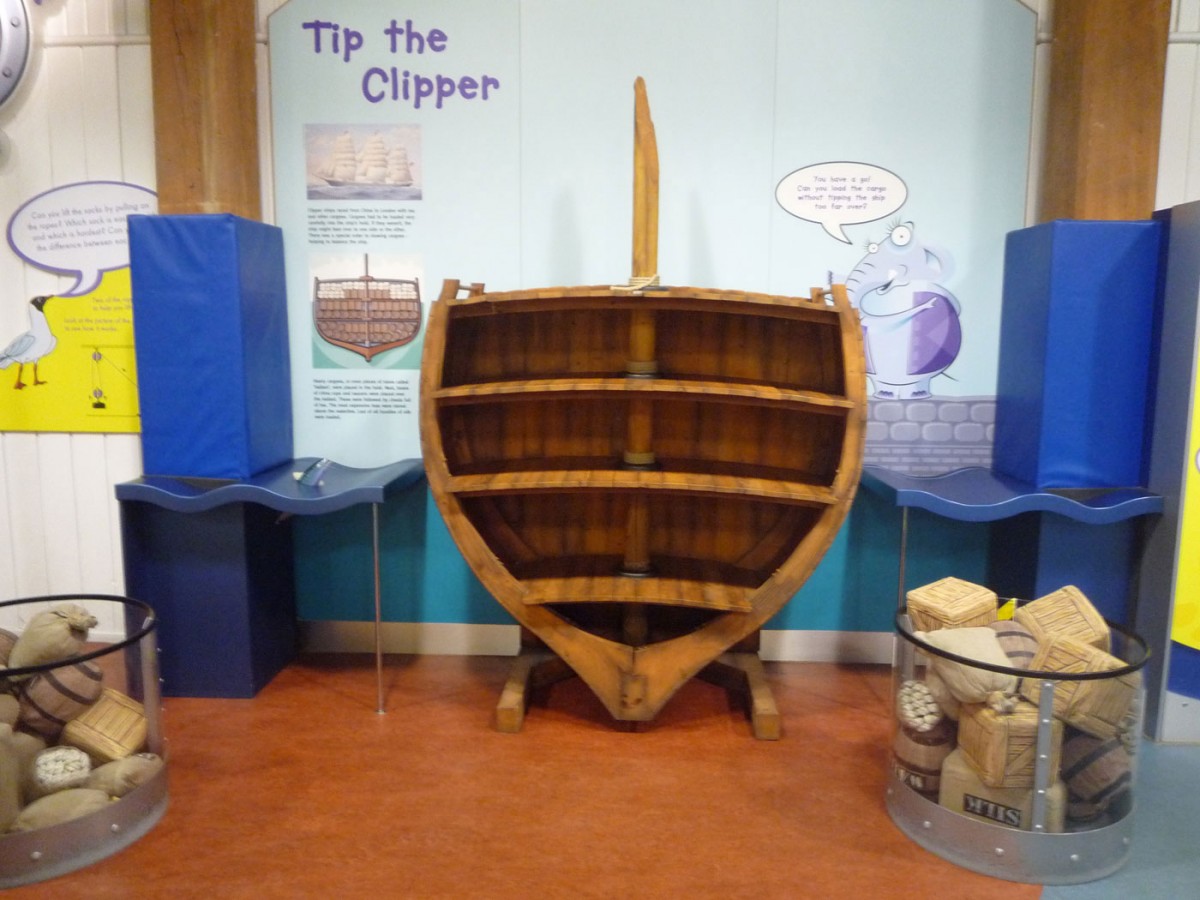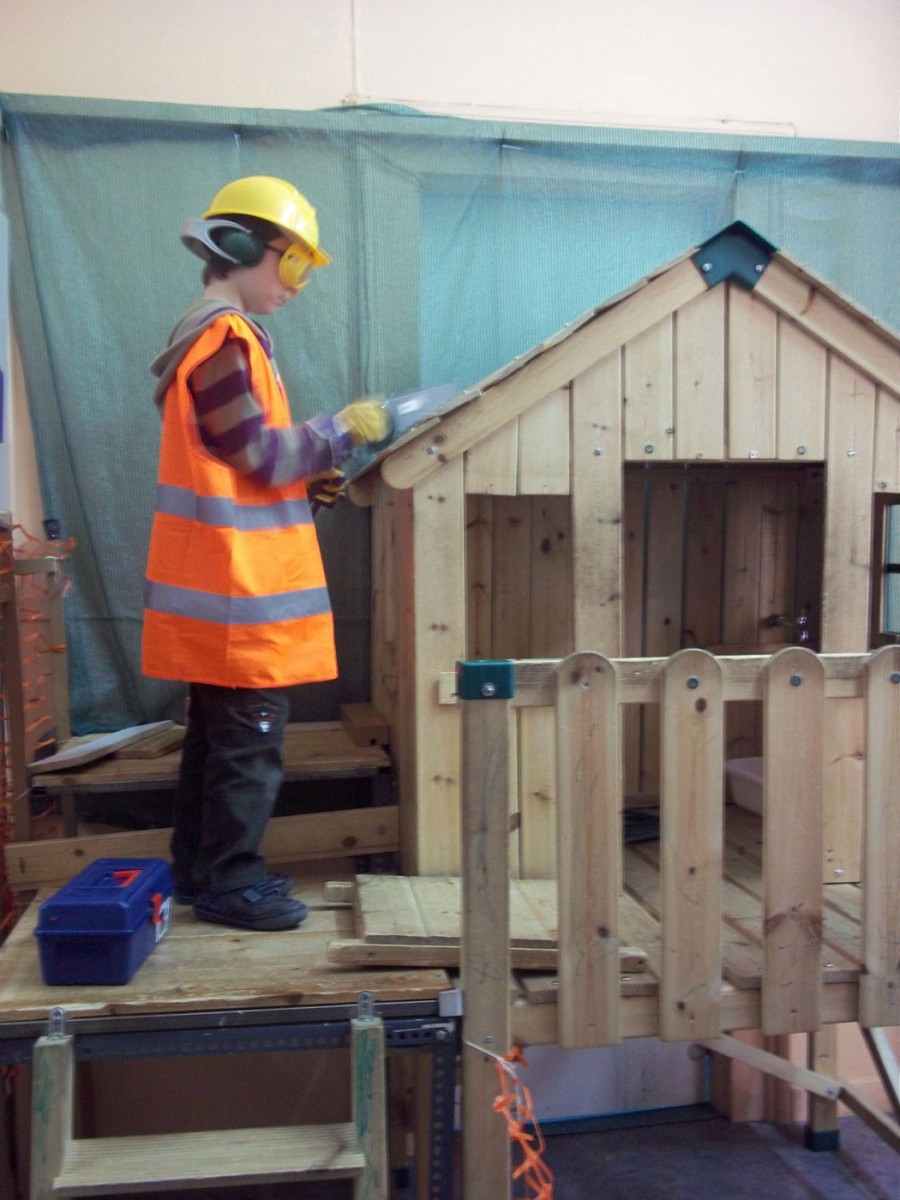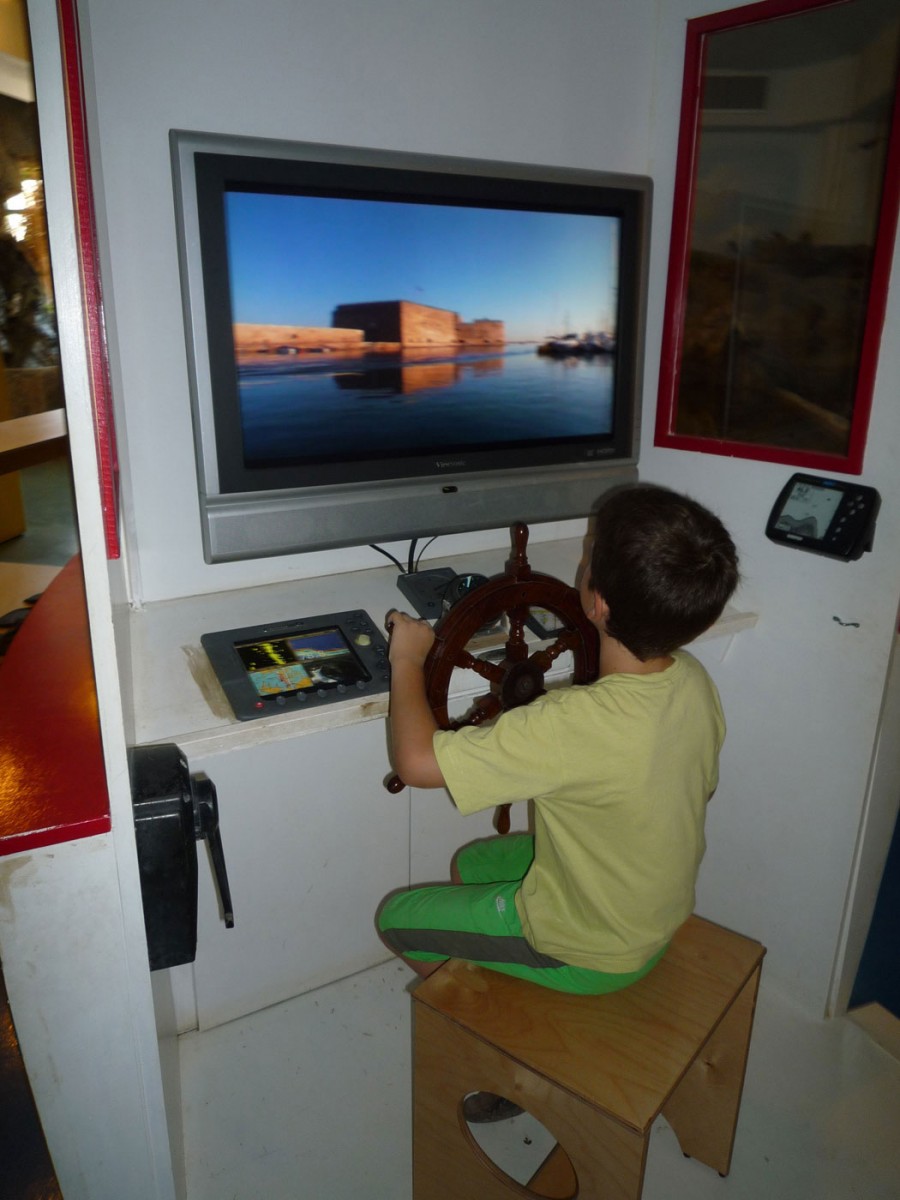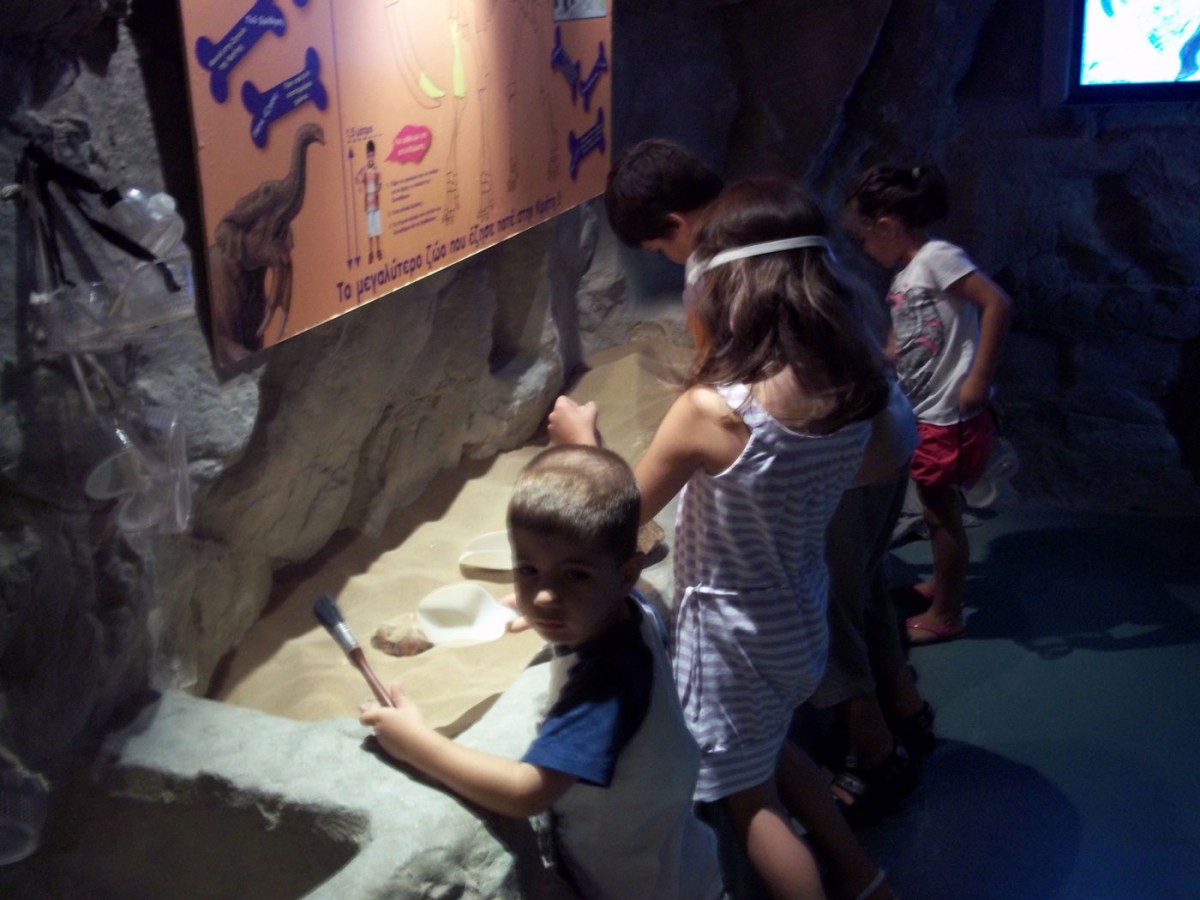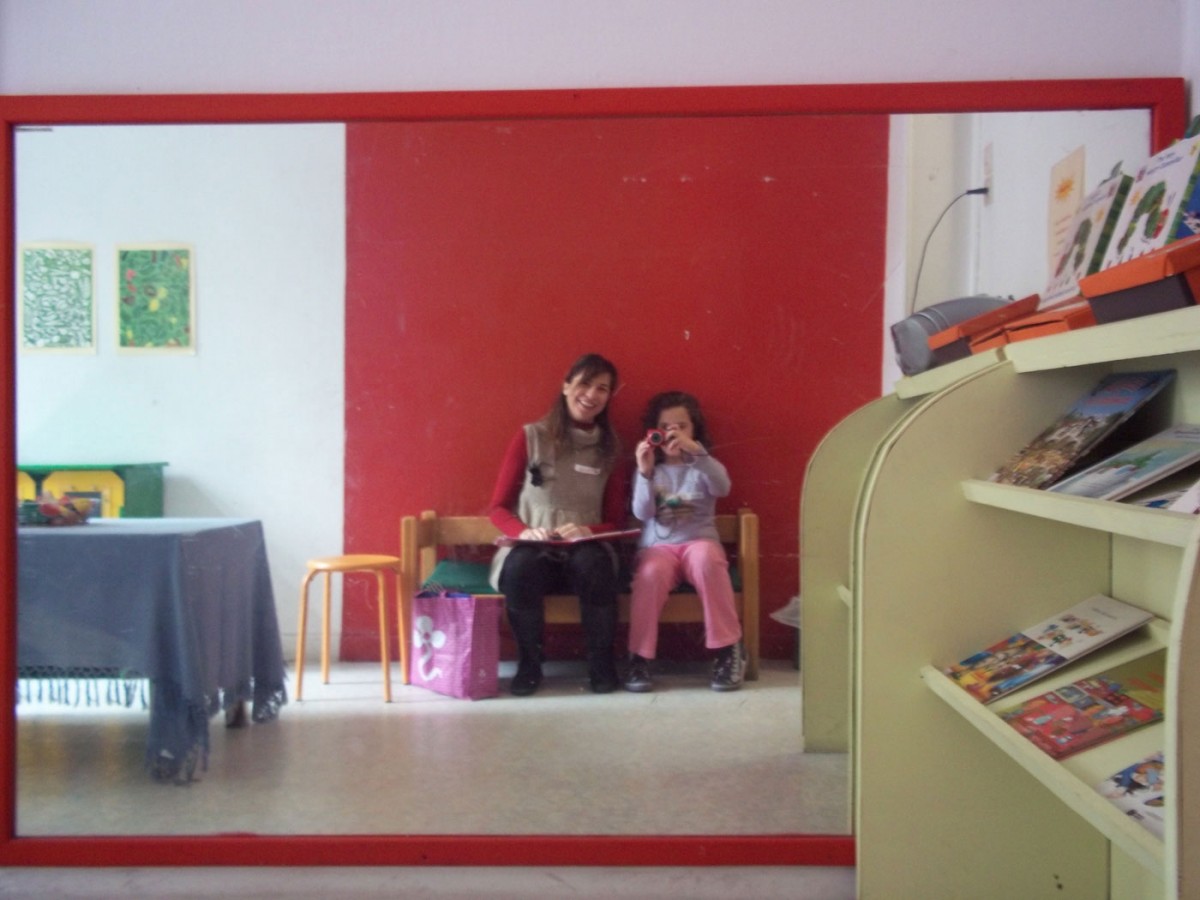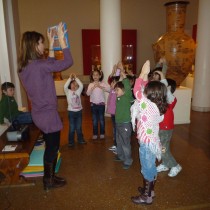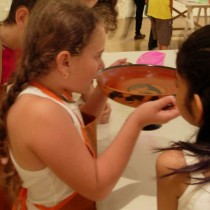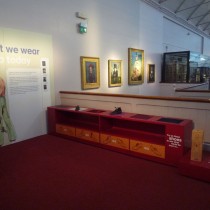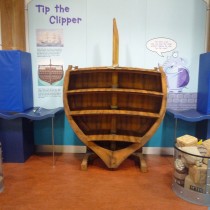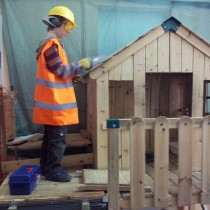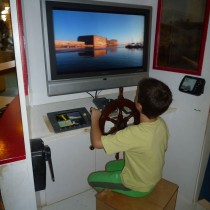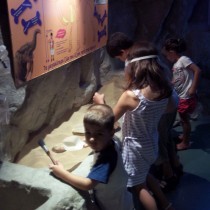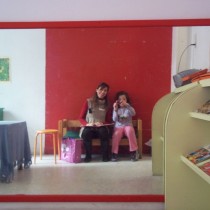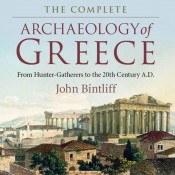The 4th section of the special issue “Museums and Museology in modern society. New challenges, new relationships” will focus with four new papers on museum education both as a methodological tool, a need and an experience. The basic reference group in all the papers of this section are the children, whether as pupils of different school levels or as individual museum visitors. Accumulated knowledge is presented, that on the one hand is based on important research that studies the characteristics and function of the so called “child-centered” museum and on the other on the rich experience of teacher museologists serving at all levels of compulsory education thus attempting through their educational work to creatively reinforce the relationship between museums and schools.
Despina Kalessopoulou examines how the child interacts with the museum and how its more active participation can contribute to the better designing of museum services, gradually leading to the shaping of a new identity for the museum to be structured through the concept of the so-called “child-centered museum”.
Venia Deligiannidi describes the features and the objectives of the kindergarten, both the potential and the challenges shaped by the new current studies programme in Greece. Gradually, she centres on the museum’s educational role in pre-school education describing the key role of a museum teacher and its characteristics, going on to discuss an indicative number of typical examples of teaching practices shaped by museum objects as a starting point that have been realized as activities both inside kindergartens and in museums.
Alkisti Chalikia focuses on museum educational programmes addressed to Primary School pupils. The age groups covered by the primary school level make up the greatest number of young visitors to museums and for this reason the corresponding programmes historically have shown the greatest development and range in their design that helps come to conclusions regarding the characteristics of a successful educational programme within a museum.
Katerina Kosti presents a series of teaching scenarios that she herself has carried out in practice with secondary school pupils both in the museum and in the classroom. The scenarios have to do with a didactic approach to the past and the multiple possibilities of utilizing museum objects as a means to the understanding of this past. The relevant scenarios have been shaped as a basis for the needs and the potential that make up a school class of today.
Marlen Mouliou
Lecturer in Museology, Department of History and Archaeology, National and Kapodistrian University of Athens
The Child and the Museum: A relationship with many dimensions
It is enough just to quickly browse through the webpages of museums both in Greece and abroad to discover that the child is often on the receiving end of various educational services in the context of either a school or a family visit. A more insistent researcher will realize that there is an increase on a global level of museums designed exclusively for children or devoting a part of their exhibition space to them. Much seems to have changed since 1889 when E.R. Lancaster, head of the Association of Museums of Great Britain, emphatically declared that “ teaching and an interest offered by museum collections do not fit in any way the nature of the child’s mind” (note 1), while at the same time there were museums where the entrance to children under the age of 10 was forbidden (note 2). Or is that perhaps not the case? In a recent relevant article by the UK newspaper The Telegraph, a debate was re-ignited as to whether children should be banned from museums (note 3). The cause was a published photograph of a small child on top of a highly expensive piece of sculpture by Donald Judd at the Tate Modern. Is it a matter of educating children and of making them aware in matters regarding the approach to cultural heritage? Is it a matter of properly adapting the exhibition environment to the natural inclinations of children regarding their behaviour and interests? Or perhaps should we reverse the question and ask ourselves how well do we know what children are looking for in museums and how can we best respond to this?
The present article aims to offer a survey of different ways the museum community has given children the opportunity to participate in the museum scene also raising questions related to research on the child and its participation’s contribution to a more effective design of services that are addressed to it. The concept of a child-centered museum that we will approach in the concluding remarks includes the different dimensions of the relationship between the museum and the child and enhances the need of a museum organization to be guided by an overall view on the ways of empowering children in their approach to material culture and in the exploring of their personal identity through contact with cultural heritage.
Education that empowers
Mediated learning services are the oldest and most basic dimension of museum education (note 4). Already since the end of the 19th century, museums in Britain the USA and Germany, organized educational activities that for the most part were guided tours. Sometimes, however, children were allowed to touch authentic objects and participate more actively in the educational process by using specially designed educational materials. The learning theories gradually developed over the 20th century such as the Discovery Learning theory, the theory of constructivism and Vygotsky’s views on the influence of the social factor, offered the necessary proof for a radical reformation both in the ways education is offered in the museum and the learning environment is shaped, emphasizing amongst other things the need for self motivation and the creation of proper conditions for the joint learning of adults and children. Museums now design imaginative educational programmes geared not only towards cognitive aims but towards the development of the child’s skills, cultivating critical and creative thought, collaboration, empowering the child in its quest for personal interpretations and connecting cultural stimuli encountered in the museum with the child’s emerging personal identity. There are many recorded examples both in international and Greek bibliography (note 5). Educational activities may include the following:
-Activities in exploring and assisted discovery (e.g. with the help of the “midwife’s method”, work sheets, treasure hunts, digital applications etc.)
-Use of narrative (e.g. story-telling as an independent activity or as part of an educational programme, creating stories with audience participation)
-Approaches related to theatre, music and dance (e.g. theatre games, role playing, educational drama and on occasions music, independently or combined with dance and speech, fig. 1)
-Workshops in painting, constructions, digital creations, cooking etc.
-Touching and multi-sensory contact with authentic objects or their copies (fig. 2).
The material culture of children
Children’s tangible testimonies are not always easy to locate especially in the field of archaeology (Sofaer Derevenski 2000) and often they are not judged as being worth preserving, due to their being held in such low social esteem, the transitional stage of childhood and children’s consequent inability to defend their rights and claim equal representation in museums (Roberts 2006, p. 155). In direct proportion to the emerging of childhood as an independent social category worth studying within the fields of sociology and anthropology (Μακρυνιώτη 2003, Christensen & Prout 2005), as of the 1950s there was an increase of interest in objects related to the child as well as in the way it expresses itself in aesthetic terms as a genuine way of externalizing its views on the world. Thus appeared two particular types of museums: the museums of childhood and of childrens’ art.
Childhood museums usually offer collections of objects such as games, clothes or school supplies dating from the end of the 19th and the start of the 20th century aiming to present aspects of children’s lives. Their practices, however, do not seem to have been informed by scientific discourse developed since the 1980s on the child’s conscious activity within the environment. Thus most exhibitions do not go beyond the nostalgic viewing of childhood as a carefree period of innocence and play with narratives from the adult’s point of view leading to reconstructions of childhood from which are absent controversial issues such as child labour.
Museums of children’s art celebrate childhood creativity by preserving, studying and promoting children’s art in its own right as a form of artistic expression and as a potential tool for understanding the world and psyche of children. At the same time, museums of children’s art encourage the aesthetic development of children and utilize creativity as a means to their personality’s empowerment and multi-faceted development. In the context, moreover, of promoting a child’s rights, the existence of museums of children’s art can be considered as an important step towards recognizing a child’s right to free expression and its participation in cultural life. These museums provide a space where children can exhibit their work, express their views on it, also on the artistic proposals of other children or on matters raised by them, making use of resources and means usually accessible only to adults. Nevertheless we should stress that children’s participation in the operation of a museum of children’s art is very restricted. Children do not participate in committees for judging the works to be exhibited or awarded, they do not decide on the themes of exhibitions that would interest them and there has been no systematic research on what they believe regarding the value of museums in their lives, on the type of services offered to them and the educational methods utilized.
The last point constitutes a joint critical look at these two types of museum. Seen through the eyes of children it is doubtful if the latter are satisfied in seeing toy collections inside display cases and in dioramas or children’s drawings displayed in the traditional way of an art gallery. Children need experiential contact, this is why over the last years some museums exhibit children’s material culture using child-centered techniques such as thematic environments which children can enter and live out the experience of a life different to theirs sometimes playing with the exhibited toys or their copies (note 6). Elements of design that are child-centered are a basic requirement in order for museums to have the child at the nucleus of their collections and to exhibit in ways fitted to the interests and developmental needs of children (fig. 3).
Specially designed exhibition environments
A new era in the field of services for the child’s educational needs was marked by the creation in 1899 of the first children’s museum in Brooklyn, New York and in 1901 of the first hall for children in a museum “for grown ups” (Smithsonian Institution). Their difference from other museums was that the central point of reference for the exhibition design were the needs and interests of children and not the collections (note 7). The awareness that children need specially adapted exhibition practices and educational methods for them to actively approach cultural heritage, contributed to the spreading of these targeted museum spaces (Καλεσοπούλου and Μουρατιάν 2011, p. 48). Their appearance ‒almost at the same time as other institutions of the modern period that intended the social, intellectual and natural growth of children, such as compulsory school education and the creation of outdoor playgrounds (Hill & Tisdall 1997, p. 118; Cunnigham 2005, p. 181)‒, reflected the changing perceptions on the value of childhood as an independent and decisive stage in the life of a human being. Many of the principles of progressive education as well as such educational systems as that of Montessori are behind the emphasis put on motivation, experiential learning and the respect for a child’s personality as advocated by child-centered museums.
One of the greatest criticisms received by these targeted exhibition environments is that they isolate children in a particular exhibition space which can deprive them of contact with the most important museum collections that are usually exhibited elsewhere, and to act as an excuse for the lack of child-friendly museographic arrangements in the rest of the museum environment. Child centered exhibition spaces, however, have operated as “educational workshops” where techniques appropriate to a public of children are tried out with more freedom before being widely adopted and complement the rest of its, the child’s, museum experiences. There has also been an increase over the last few years of museums that include child-centered elements in the design of permanent or temporary exhibitions, creating special areas, routes or exhibition units addressed to the child within the general exhibition space (note 8).
What are the features of a child-centered exhibition environment? This is an environment in which objects, both authentic or copies, are utilized as tools to activate emotion, imagination and offer motivation for learning. For this reason they are almost never exhibited by themselves but are incorporated within thematic installations and interactive exhibits that can represent real life situations, imaginary worlds or can present scientific phenomena and concepts. We will now mention some key points relating to their more effective design utilizing conclusions from the fields of environmental and developmental psychology (note 9):
– The embodied approach: experiential contact with things and the possibility of handling them, is the predominant feature of child-centered exhibition environments. It is good for children to be able to control their environment, acting on the objects, changing their shape or surface and freely exploring the space, because through physical interaction they receive more information and are supported on their way to understanding abstract concepts, in the shaping of their attitudes and values and in the development of their skills.Moreover, research in the area of embodied cognition enhances the material basis of psychological processes and the importance of somatization, namely the way that the body deals through processes of perception-action, with potentials offered to it by the environment, always under specific socio-cultural conditions (Πουρκός 2008, pp. 109-113). Towards this objective the exhibition environment needs to offer opportunities for:
– Sensory kinetic activities (fig. 4).The variety of sensory stimuli and the possibility of discovering and experimenting through movement are considered necessary to excite interest, while at the same time utilizing children’s natural inclination towards the benefits of learning (Weinstein 1987, Olds 1989).
– Autonomous exploration. Exploration is encouraged by the creation of exhibition units characterized by complexity (note 10), diversity and variations in the body’s attitude and movement (e.g places in which one has to enter by bending, places where one has to use steps or to climb, openings through which one can look or place one’s head or hands) (fig. 5) . The creation of micro environments, namely distinctive places featuring variations in scale, the degree of privacy and the overall atmosphere, offer children choices depending on their mood and the level of activity that they wish for (Olds 1989, Trancik & Evans 1995). It should also be noted that it is good for familiar and easily recognizable features to be incorporated in the design and for the possibility of the space’s overall supervision, since these elements create security in children as well as in their escorts for the former to move around independently satisfying this important developmental need of middle childhood (Chawla 1992, Kyttä 2004). They should, however, also be accompanied by elements that contain a challenge, mystery and unexpected discoveries, because these excite their curiosity and imagination and make for memorable experiences.
– The game: the game is an interpretative-educational approach particularly important for a child audience as has been recognized by many theoretical and empirical studies (note 11). In order for the exhibition environment to support children’s games it should allow them freedom to use their initiative and to offer elements that excite their imagination and their emotions. Particularly role playing within contained exhibition environments reinforce empathy, discovering aspects of their personality and the trying out of different social roles (fig. 6). Gallagher and Snow Dockser (1987) and Rennie και McClafferty (2002) also emphasize the importance of there being familiar objects for children to be able to handle their experience with whatever they know and to directly involve themselves with the game. Despite the importance of the presence of unfamiliar stimuli of which museums are full because they develop in children their scientific and explorative behaviour which helps in learning and the discovery of new information, the combination of learning and recreation with the help of playful activities is the best way for children to extract joy and positive feelings from a museum.
– Creative expression: the possibility to familiarize themselves with and modify their museum experience through creative activities is extremely important because it reinforces children’s self-esteem and the shaping of personal “narratives” inspired by the museum’s exhibits.
– Social interaction: most studies carried out on child-centered environments stress the adult’s influence on children’s learning and overall museum experience (Crowley & Callanan 1997; Puchner, Rapoport & Gaskins 2001; Downey, Krantz & Skidmore 2010). Associating with their peers has also been found to reinforce interaction with exhibits and the creation of more original scenarios during the symbolic game (Tuckey 1992; Shine & Acosta 2000). Consequently, it is good for the exhibition environment to have the proper layout and an abundance of materials allowing collaboration or simultaneous playing (fig. 7), but also to make it possible for other children to observe which is an important stage of familiarizing themselves before their active participation (Weinstein 1987; Borun & Dritsas 1997).
Listening to children’s voices
All the museums and services that have been presented so far have been designed for children but, for the most part, not with the children. They are usually asked for their opinion during the final or corrective assessment either of the exhibits or the educational programmes. Frequently, moreover, research isn’t carried out directly with the children but with their escorts whether teachers or parents. It is imperative that research be methodologically designed in a way that allows children to share their experiences so as to empower them and offer them a partial or total control of the research process such as visual and experiential methods (Christensen & James 2000; Barker & Weller 2003; Lewis et al. 2003; Clark 2005).This should apply if we really wish to honour the child’s right to have his views heard in issues that concern it as dictated by the Convention on the Rights of the Child (fig. 8).
The most systematic effort made for children to participate in the operation and government of museums is by children’s committees that have been set up in a small percentage of children’s museums, mainly in Europe but also in America, for them to function in an advisory capacity on a multitude of issues. Care should be taken, however, for this participation not to be a token one but such procedures to have been taken into account allowing the decisions taken by the museum’s governing bodies to have representation, a democratic function and the ability to influence (note 12).
Towards a child-centered museum
We have examined four basic guidelines round which the museum community has organized its efforts to facilitate the access of children to material culture. We can next locate two key points linking these guidelines and which are connected to the concept of a child-centered museum, that is, a museum organization that places children, their needs and rights at its centre:
a) A museum can be child-centered whether exclusively addressing children or not. Apart from the special category of children’s museums every museum can aim at transforming itself in such a way that children feel welcome on every level of its function; a friendly reception and the possibility of moving independently in the museum, educational services and special events covering a broad range of interests and facilitating the shaping of a personal connection to the exhibits, exhibition environments allowing children to discover, empathize and to fully participate with their body, intellect and spirit which will give them the possibility to influence the museum’s functions by leaving their “imprint”.
b) For the above to be feasible it is imperative we recognize children as capable people and find ways of encouraging their abilities. The first step in exciting children’s interest while offering at the same time natural and emotional security is a careful aesthetic approach with interesting morphological elements as well as proper ergonomic features which are to some degree relevant to children’s experiences (Γερμανός 2006, pp. 376-379). Most care, however, for us to succeed in the change of example has to be taken with the psycho-educational qualities adopted by the museum in each of its functions, namely those that allow the child to take control, use skills, discover who he is and what he can or wants to do, collaborate and try out different social roles. These qualities are those mentioned by Chawla (1992), summing up the sources of the development of emotional ties with a place from pre-school age up to adolescence. The social and creative development of the self promoted by these qualities must be the ultimate target of each institution wishing to be considered child-centered. The frequency and extent to which such opportunities are given to children in museums is something that will make them recognize that a museum is addressed to them, is of relevance and will help them cultivate with it a relationship of friendship and respect to be honoured all their lives.
Dr Despina Kalessopoulou
Archaeologist-Museologist, National Archaeological Museum
